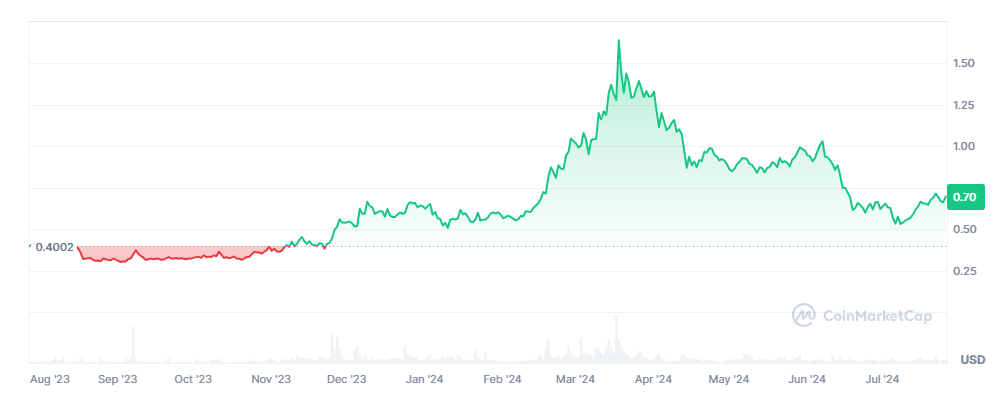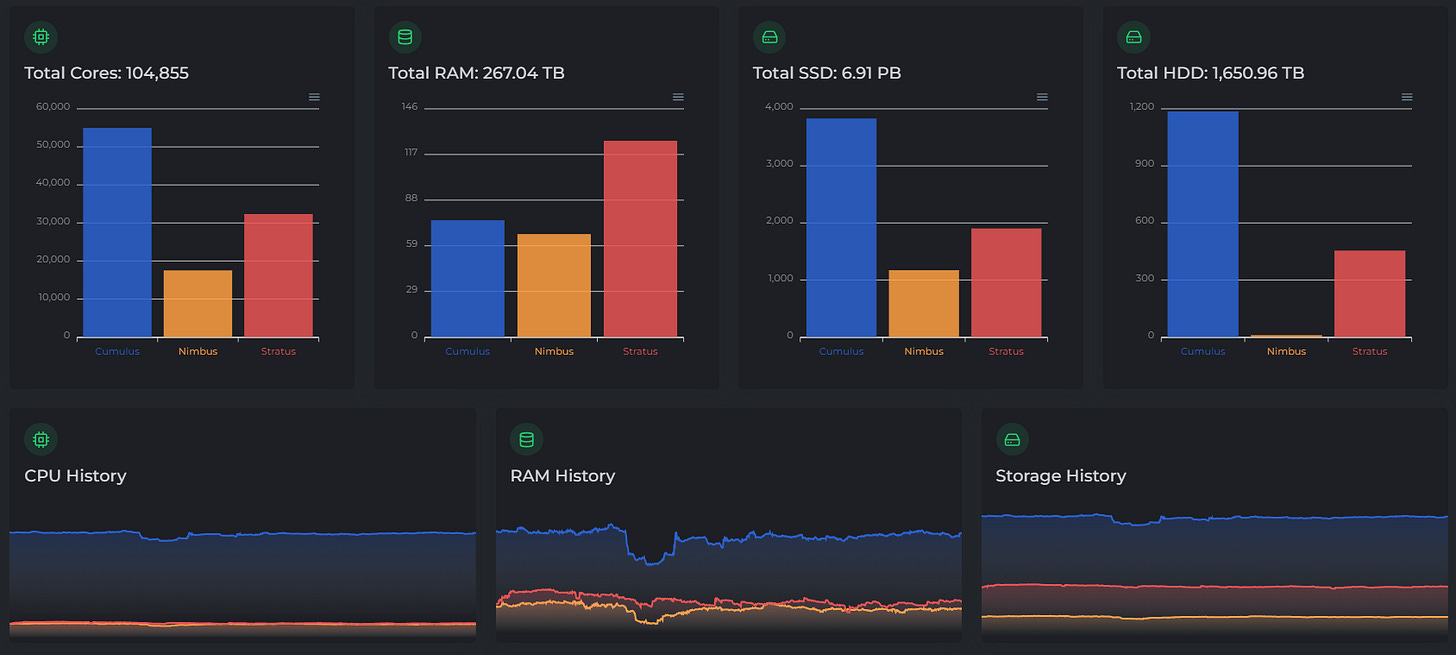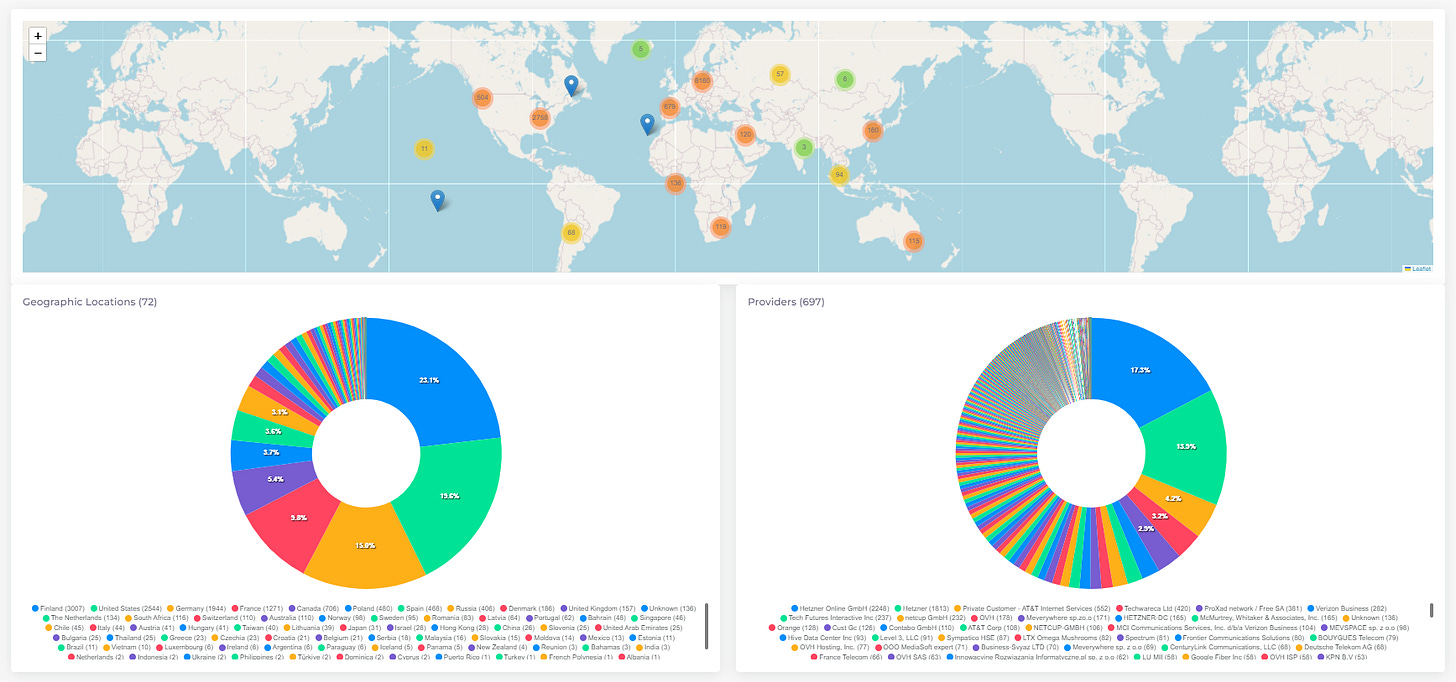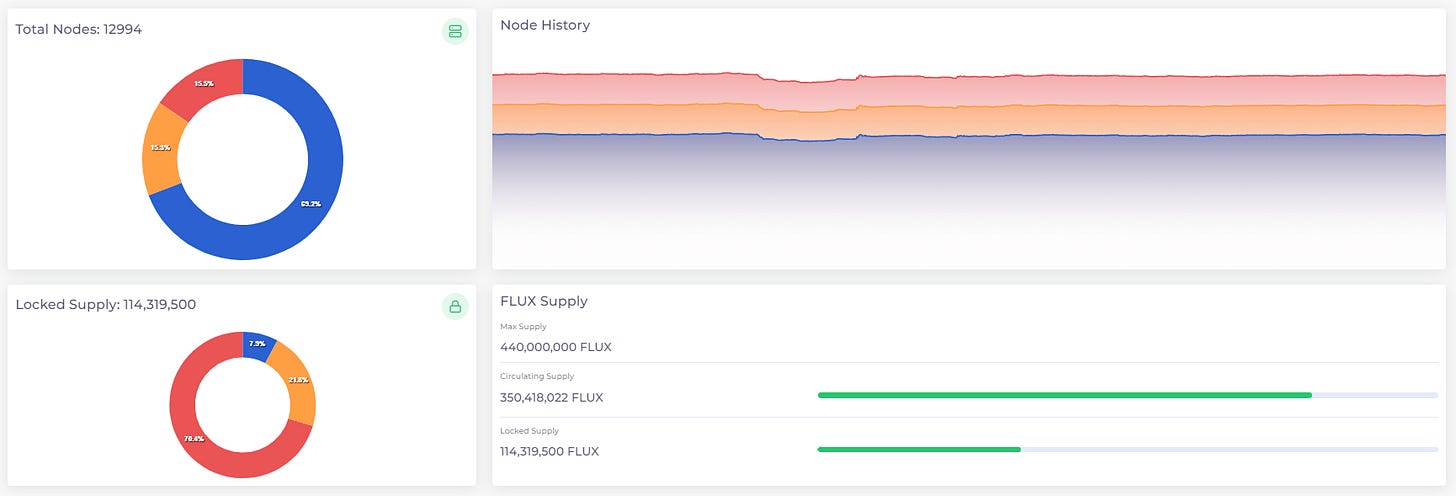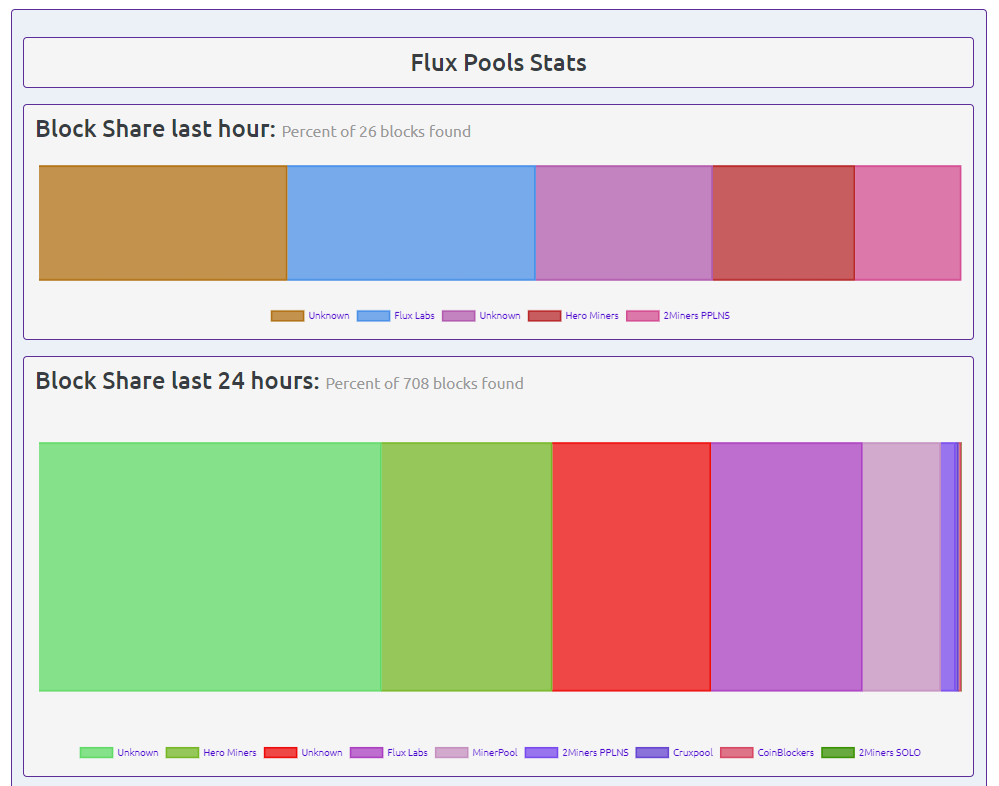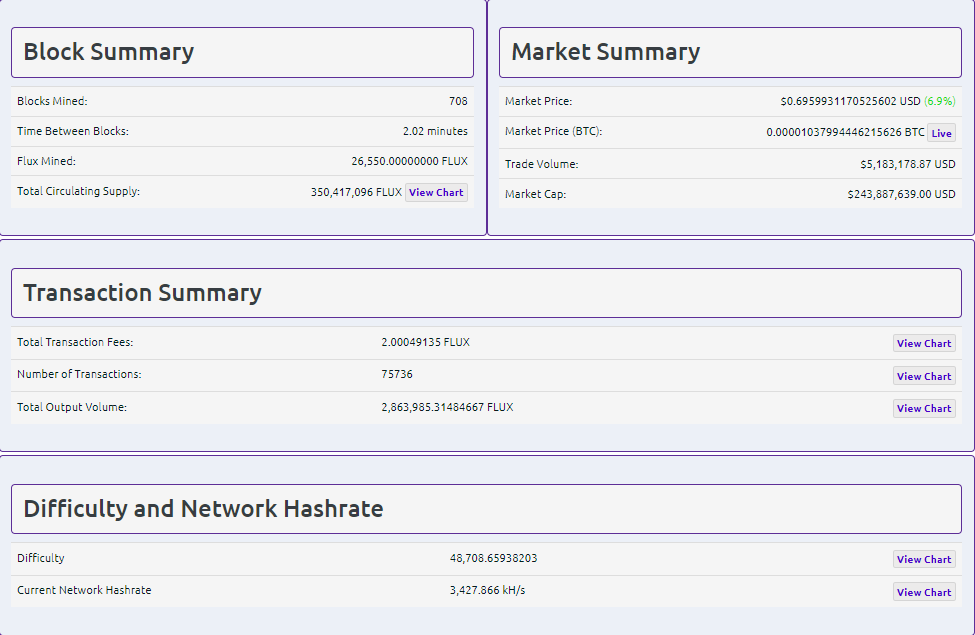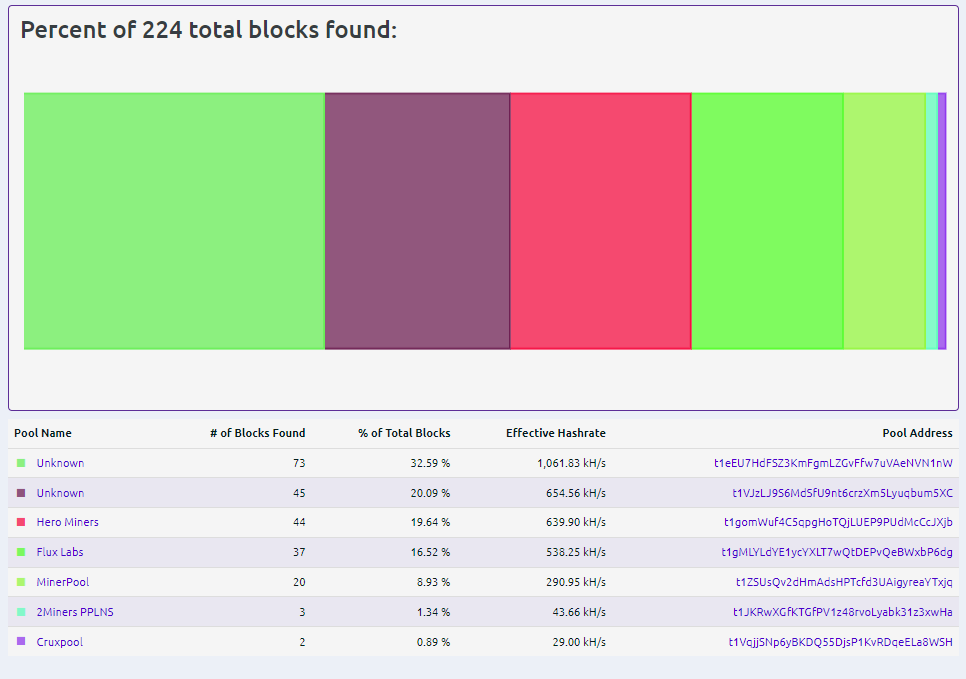🌐Flux: The Hidden Costs of Running a Flux Node,📈Buying BTC & ETH ETFs May Soon Become Simpler,🚀Terrible For Buyers, Great For Crypto
Unleashing Web 3 Awesomeness Powered By Spheron Network
In today’s edition:
Deep Dive into Flux
Buying BTC & ETH ETFs May Soon Become Simpler
Terrible For Buyers, Great For Crypto…
Your Weekly dose of Web3
Total Read Time: 8 Min 45 Seconds
🔎 Deep Dive
Flux: The Hidden Costs of Running a Flux Node
Welcome to our Deep Dive section, where we examine the cutting-edge technology behind Web3 infrastructure, DePIN, and blockchain. Today, we will cover Flux, a groundbreaking blockchain project revolutionizing the decentralized exchange (DEX) landscape.
Flux is committed to enhancing user experience in DEXs and shaping the future of Web 3.0. Let's explore how Flux empowers internet users and developers to build, deploy, and utilize decentralized computing services and blockchain-as-a-service solutions through its innovative offerings, including FluxNodes, FluxOS, Zelcore, Parallel Assets, and xDAO.
Join us as we embark on an exciting journey to understand Flux's current state, its remarkable achievements, and the challenges it faces in today's rapidly changing technological climate.
Here is How Everything Started. (History & Founders)
Flux (FLUX) is a blockchain project primarily focused on improving the decentralized exchange (DEX) landscape. Renowned for its commitment to enhancing the user experience in decentralized exchanges, Flux started as a fork of the ZCash blockchain but has since transitioned to operate on its independent blockchain.
Three individuals co-founded Flux in 2018. A team of experienced blockchain developers:
Daniel Keller - A seasoned professional from the USA, Daniel serves as the Chief Strategy Officer of Flux. With over 25 years of experience in technology infrastructure, operations, and leading large-scale projects, he is crucial in bridging effective communication across various organizational levels.
Tadeas Kmenta - As the second Co-Founder, Tadeas has been instrumental in developing the project since its early stages. Currently holding the position of Chief Innovations Officer, he focuses on exploring and integrating new and emerging technologies within Flux and FluxOS.
Parker Honeyman—As the Chief Operations Officer, Parker brings valuable engineering expertise and proven development methodologies to the Flux project. His technical understanding and operational insights contribute significantly to the project's success.
These co-founders combine their unique skills and experiences to drive Flux's vision and growth, leveraging their collective expertise in technology, innovation, and operations to shape the platform's future.
Flux Ecosystem Overview
Flux is a comprehensive ecosystem designed to empower internet users and developers to build, deploy, and utilize the decentralized Web 3.0 of the future. It offers a suite of decentralized computing services and blockchain-as-a-service solutions, consisting of FluxNodes' decentralized infrastructure, the FluxOS cloud operating system, the Zelcore self-custody multi-asset wallet and blockchain app suite, and the Flux blockchain for on-chain governance, economics, and parallel assets to ensure interoperability with other blockchains and DeFi access.
Flux (Blockchain + Coin)
Flux is the backbone of the ecosystem, functioning as the blockchain protocol that powers transactions, FluxNodes, resource allocation on FluxOS, and mining to secure the chain. It provides the critical, high-availability infrastructure for the New Internet. Notably, projects and development teams are not required to use the Flux blockchain to utilize FluxOS, granting them access to necessary infrastructure while maintaining the unique properties of their own chains.
Flux is a fair-mined, Proof of Work (PoW) cryptocurrency that serves as a utility asset for onboarding into the ecosystem and facilitating information transactions within it. It also acts as the primary incentive for operating FluxNodes, which are enterprise-grade servers powering the ecosystem. Flux can be obtained through GPU mining, trading on exchanges, and as rewards for operating nodes. The Flux ecosystem is community-based, with a foundation that represents and protects the community's interests.
The Flux distributed ledger provides a complete and efficient asset that operates seamlessly with every module in the ecosystem. It offers a master transparent ledger, recording necessary data transactions and acting as a currency for purchasing services and covering transaction costs for third-party applications. Additionally, it provides the necessary control for the ecosystem's functionality, such as rewarding FluxNode operators, scaling the network, and incentivizing commerce on the network.
FluxOS
FluxOS is the "brain" of the FluxNodes and the Flux Computational Network. It is an open-source MEVN stack built by the Flux Team, serving as a second-layer operating system complementing the base Linux OS running on all FluxNodes.
FluxOS ensures that all nodes are running properly and communicating throughout the network. It provides a decentralized computational network for developers to run applications without single points of failure, offering fair-priced network services and geographical distribution for high availability.
FluxOS manages the deployment of dockerized applications, sidechains, and asset layers, balancing hardware usage across FluxNodes and providing real-time computing metrics. It also ensures each FluxNode meets minimum system requirements through active benchmarking, enabling fair operator rewards and a robust decentralized network.
FluxNodes
FluxNodes are decentralized computational nodes supplying dedicated computing power and generating rewards in Flux for powering the network. Operated by individual Flux holders, these nodes are spread globally, ensuring accessibility and availability of applications at all times and locations.
FluxNodes differentiate Flux from other crypto projects by requiring highly-available, enterprise-grade hardware and sufficient Flux collateral to operate. This approach provides real, useful computing power to the network, making it decentralized both in terms of node operators and geographic locations.
Zelcore
Zelcore is a multi-asset crypto wallet and platform offering custody management of over 275 cryptocurrency assets and more than 25,000 digital assets on various asset layers. It includes built-in trading services of major centralized exchanges and quick-swap services, allowing users to mine, store, transact, and exchange a wide range of crypto assets within a single secure, easy-to-use application.
Zelcore serves as the frontend for the Flux Ecosystem, enabling users to interact with its features. Upcoming features include aggregated crypto and fiat-ramp pricing, integration of decentralized exchanges, yield and staking options, lending protocols, and next-gen smart contract negotiations.
Parallel Assets
Parallel assets are tokens within the Flux ecosystem residing on other blockchains, providing accessibility, tradeability, and DeFi interaction. These tokens can be swapped 1:1 with native Flux using the Fusion app in the Zelcore wallet. Flux plans to have parallel tokens on 10 different blockchains, offering numerous opportunities for Flux holders to leverage benefits and decentralized exchanges on those chains.
Fusion
Fusion facilitates interoperability by allowing Flux users to swap and bridge Flux tokens between different chains. It also handles claiming snapshots and parallel mining rewards. While currently centralized, Fusion aims to become fully decentralized with smart contract-controlled liquidity pools.
xDAO
xDAO is Flux's governance tool, enabling the community to submit proposals on the future of Flux. Flux node operators vote on proposals, providing on-chain governance and further incentivizing Flux holders to run nodes on the network.
FluxLabs
FluxLabs is an incubation and acceleration program for blockchain and technology-based projects, focusing on early-stage startups in the blockchain and cryptocurrency industries. It supports specific use cases, structured brainstorming, community events, and co-marketing for new technologies and partnerships. FluxLabs also facilitates asset integration into Zelcore and offers guidance on legal, security, business, and operational aspects for developing functional projects and businesses.
The Current Project Update of Flux
In June, the Flux ecosystem recorded the launching of highly-anticipated products to transform Web3 and the cloud computing industry. From Flux Cloud 2.0 to FluxEdge, here’s a recap of June in the Flux timeline.
$2 Million in Free Deployments
Free deployment campaign worth $2M for educational institutions.
Available to University Blockchain Alliance (UBA) members and other interested institutions.
Promotes decentralized technology use in education by eliminating cost barriers.
Flux Cloud 2.0 Release
Complete UI overhaul and new features.
Introduced Single Sign-On (SSO) with options like email, Google, and Apple ID.
Integrated fiat payment ramp for easier budget management.
New Flux Marketplace (v2) for quick deployment of dApps, servers, nodes, and custom applications.
Zelcore Updates
Zelcore v8.2.1:
Introduced FluxID for enhanced digital identity management.
Added multiple EasyLogins accounts and biometric protection.
Reworked UI and introduced a BSC contract for TrueUSD BEP20.
Zelcore v8.3.0:
Support for Bitcoin and Litecoin Taproot accounts.
Added Bitcoin, Litecoin, and Digibyte Native Segwit Accounts.
New assets like Karate Combat token and $BDX.
Other Upgrades
FluxCore Beta Updates:
Added Default Mining Configuration and Overclocking Profiles.
Introduced Miner Auto-Switch Toggle for Proof of Work and FluxEdge.
Support for leasing machines for new services and withdrawing earnings.
SSP Updates:
Added support for Zcash and Bitcoin Cash.
FluxEdge Alpha Public Release
Public release with features like Kubernetes clusters, fiat payment, and tools like Jupyter Notebook, Grafana, and Ollana.
Focus on efficiency and environmental sustainability by using under-utilized hardware.
Limited slots are available per region for Alpha program participation.
Key Points
Major product launches and updates in the Flux ecosystem.
Focus on promoting decentralized technologies in education.
Enhanced user experience and accessibility with Flux Cloud 2.0.
Continuous improvements and feature additions in the Zelcore wallet.
Introduction of FluxEdge Alpha for advanced cloud computing services.
Commitment to environmental sustainability and efficiency.
The current market of Flux (FLUX)
Flux is the cryptocurrency that powers the Flux ecosystem. It has a number of uses, including purchasing resources, collateralizing nodes, fuelling transactions on FluxOS, and rewarding both miners and FluxNode operators for providing computational resources.
The Flux ecosystem is devoted to empowering everyone to develop, deploy, and use the decentralized Internet of the future: Web3
At this moment, the Flux ecosystem consists of a native, minable POW cryptocurrency ($FLUX), a powerful decentralized computational Flux Network (FluxNodes), a Linux-based operating system (FluxOS), the premier digital asset platform (Zelcore) and, finally, the Flux blockchain for on-chain governance, economics and parallel assets to provide interoperability with other blockchains and DeFi access.
Currently (2023/1), Flux has a computational network of around 15,000 decentralized nodes, distributed globally with more than 108,000 CPU cores, 288 terabytes of RAM, and 6.7 petabytes of storage. That makes Flux the largest decentralized network in the world!
As of July 27th, 2024, with a 24-hour trading volume of $8,718,736 USD. Flux is up 5.97% in the last 24 hours.
Here are some additional statistics:
Market Cap: $243,892,082 USD
Trading Volume in the last 24 hours: $8,794,366 USD
CoinMarketCap ranking: #195
Circulating Supply: 350,416,526 FLUX
Total Supply: 440,000,000 FLUX
Fully Diluted Market Cap: $306,259,607
The Highest Price: $3.33 - Jan 03, 2022 (over 2 years)
The Lowest Price: $0.0164 - Jan 13, 2021 (over 3 years)
Summary
Flux: Flux's Achilles Heel in the Age of Automation
Flux is a decentralized cloud infrastructure that aims to provide a robust and scalable environment for decentralized applications (dApps). Here are some of its advantages, pros, and unique features:
FluxNodes are the backbone of the Flux ecosystem, providing the computational resources needed to run dApps. They are distributed globally and incentivized through rewards.
Flux has a parallel asset layer that allows the creation of assets on multiple blockchain platforms. This facilitates easier integration and interaction with different blockchain ecosystems.
Decentralized Web3 Apps (dApps): The platform supports a wide range of decentralized applications, from DeFi projects to data storage solutions, providing a versatile environment for developers.
Marketplace: Flux features a marketplace where users can deploy and manage their applications easily. This marketplace streamlines the process of finding and using decentralized services.
Scalable Infrastructure: The Flux network is built to handle large-scale applications, ensuring that businesses can rely on it for their critical operations.
Data Sovereignty: With Flux, users have full control over their data, ensuring that it is stored and managed according to their preferences without third-party interference.
Kubernetes Integration: Flux integrates with Kubernetes, a leading container orchestration system, allowing developers to deploy and manage containerized applications with ease.
Community-Driven: Flux is driven by a community of developers and node operators, fostering innovation and ensuring that the network evolves to meet the needs of its users.
As any other Project Flux faces several criticisms and challenges that highlight its drawbacks:
Technical Complexity: Setting up and maintaining Flux nodes requires a considerable amount of technical knowledge. Users need to be familiar with various software tools and networking configurations, such as Docker, UPnP, and port forwarding. This can be a significant barrier for non-technical users.
Resource Intensive: Running a Flux node can be resource-intensive, requiring robust hardware and stable internet connections. This can be a costly investment, particularly for smaller operators or individuals.
UPnP and Port Forwarding: Proper operation of Flux nodes often necessitates the use of Universal Plug and Play (UPnP) or placing the node in the router’s demilitarized zone (DMZ). However, these configurations can introduce security vulnerabilities and are not supported by all consumer-grade routers, leading to connectivity issues.
Scalability Concerns: There are limitations on the number of nodes that can be run on a single external IP address. Specifically, a maximum of eight nodes is supported, which can hinder scalability for users aiming to operate multiple nodes from a single location.
Scamming Risks: There have been instances of scams and fraudulent activities targeting Flux users. It is crucial to seek help only through official channels to avoid such risks. Unofficial support channels, while available, carry a higher risk of encountering scammers.
Manual Updates: While automatic updates can be enabled, it is generally recommended to perform updates manually to avoid unforeseen issues that might affect node uptime. This adds to the ongoing maintenance burden for users, requiring regular monitoring and intervention.
Economic Viability: The financial viability of running a Flux node can be challenging due to the division of rewards. The block reward is split between Proof of Work (PoW) miners and FluxNode operators, with higher-tier nodes receiving a larger share. This can create disparities and may not be economically feasible for smaller participants.
Conclusion
In conclusion, Flux presents itself as a promising project aimed at revolutionizing the decentralized exchange landscape and shaping the future of Web 3.0 by offering a comprehensive ecosystem of decentralized computing services and blockchain-as-a-service solutions.
However, potential users should remain aware of certain challenges associated with the project. The complexity of setting up and maintaining Flux nodes, coupled with resource intensity and security concerns related to UPnP and port forwarding, could pose obstacles for less technically inclined individuals. Furthermore, questions surrounding scalability limits, scamming risks, manual update requirements, and economic viability must be carefully considered before engaging with the platform.
In the competitive landscape, Flux faces rivals such as Filecoin, ICP, Akash Network, Golem, Storj, Spheron Network, etc. Each project has unique strengths and focuses, making the storage industry dynamic and highly competitive.
By acknowledging both the advantages and potential pitfalls, users will be better equipped to assess whether Flux aligns with their objectives and skill sets. They will ultimately decide whether to participate in building and utilizing this ambitious decentralized network.
📌Must Read
Buying BTC & ETH ETFs May Soon Become Simpler
Summarized: Digital asset manager, Hashdex, just submitted an S-1 registration statement for its ‘Hashdex Nasdaq Crypto Index US ETF,’ which will essentially combine spot Bitcoin and Ethereum ETFs in the US.
Hashdex, a digital asset manager, has submitted an S-1 registration statement for its 'Hashdex Nasdaq Crypto Index US ETF.' This ETF will combine spot Bitcoin and Ethereum ETFs in the US. If approved, investors will be able to buy a single share and receive the average return of both ETH and BTC ETFs.
What excites us the most is that if any crypto asset other than bitcoin and ether becomes eligible for inclusion in the Index, the strategy will transition to sample replication, including the new asset in the same proportions as bitcoin and ether.
In simpler terms, if a SOL spot ETF is approved, it would also be added to the Crypto Index US ETF. This suggests that the company believes it's likely to happen. This new ETF will simplify the process for investors, who usually prefer simpler/quicker processes.
This represents an innovative development in the public markets, with the introduction of BTC, ETH, and crypto futures ETFs and the potential addition of aggregated crypto ETFs (assuming this is approved). It's an exciting prospect!
Terrible For Buyers, Great For Crypto…
Summarized: Ferrari (seller of depreciating assets) is now accepting crypto → and the more companies see value in crypto payments → the more will adopt it → the greater value crypto will have in the world.
We love it when we can find logic in what appears to be a complete gimmick. And this is one of those moments… Ferrari is now accepting crypto payments in Europe and plans to extend the service to other markets by the end of the year.
Gimmicky? Sure. But also kinda genius. This is like a candy shop figuring out how to drop ads in front of a kid the moment their allowance hits. See, there’s a lot of newly-rich folk in the crypto space who all of a sudden have more money than they know what to do with — and by accepting crypto payments, Ferrari is making it easier for the new-rich to make stupid financial decisions (Aka: buy expensive/depreciating assets).
We don’t necessarily endorse the decision. But it’s smart on Ferrari’s part. Though, on the upside for the customer, depending on their tax residency, there might be some added perks. In most countries, if you choose to sell your crypto, you’re going to have to pay tax in some way, shape, or form.
But some locales don’t tax crypto if it’s being used as money (Australia was like that the last time we checked). So some lucky degenerates can buy a glossy new car and save a bunch on tax. Here’s why it’s good for the broader crypto ecosystem either way: The more companies see value in accepting crypto payments → the more will adopt it → the greater value crypto will have in the world. Nice!


